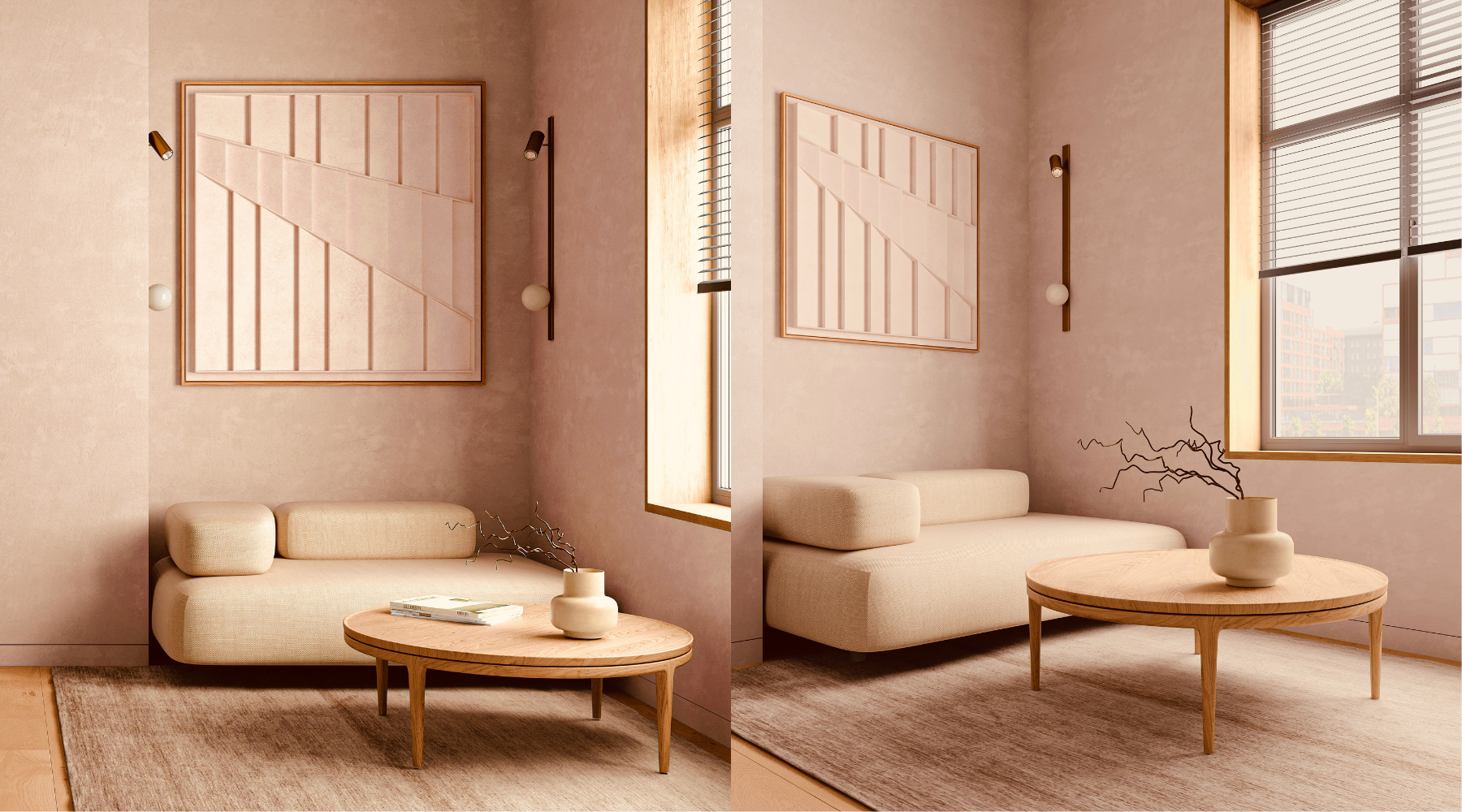There’s something undeniably calming about a well-designed minimalist space—where every element is chosen with intention, and nothing feels excessive. It’s the quiet beauty of neutral tones, soft natural light, and furniture that invites you to slow down. But minimalism isn’t just about what you remove—it’s about what you choose to highlight. And that’s where structural wall art comes in.
Imagine stepping into a lounge-like study, bathed in warm, golden light. A plush, low-profile sofa in a soft oatmeal hue hugs the corner, its curved form inviting you to sink into stillness. A sculptural wooden coffee table sits nearby, holding nothing more than a single ceramic vase with delicate, twisting branches. The space is serene, effortless—but then your eyes are drawn upward.
A large-scale geometric panel, in the same soft neutral palette as the walls, adds quiet drama to the room. Its design is simple yet striking—clean lines, subtle depth, an interplay of light and shadow that shifts as the day unfolds. Mounted on the wall, it doesn’t shout for attention; it simply belongs, like an architectural extension of the space itself.
Why Structural Art Belongs in a Minimalist Home
Minimalist interiors thrive on a sense of balance. When done right, every piece has a purpose—whether it’s functional, aesthetic, or both. Structural wall art bridges that gap beautifully. It introduces texture without clutter, movement without chaos.
Unlike traditional framed artwork, structural pieces—whether geometric relief panels, sculptural installations, or organic wall sculptures—create visual interest through depth and materiality. They work with the light, casting soft, shifting shadows throughout the day. They bring in the elegance of architecture without adding unnecessary elements.
Choosing the Right Piece: Shape, Texture, and Tone
When selecting structural wall art, think of it as an extension of the space rather than a separate decor element. It should blend seamlessly while adding just enough contrast to catch the eye.
- Soft Geometrics: If your space leans toward clean lines, opt for symmetrical, structured designs. Raised panels or linear compositions in warm, neutral tones keep the aesthetic refined yet intriguing.
- Organic Curves: For a softer, more inviting look, choose wall sculptures with rounded, fluid shapes. These pieces work beautifully alongside plush seating, natural wood, and soft linen textures.
- Textural Layers: Materials like plaster, wood, or matte stone create understated depth. A monochromatic palette—creamy whites, warm taupes, soft beiges—keeps the mood serene while allowing texture to take center stage.
Placement Matters: Let the Space Breathe
In a minimalist setting, wall art shouldn’t overwhelm—it should enhance. Think of it as a subtle focal point, something that draws you in without demanding attention.
- Above a Lounge or Sofa: A sculptural piece above a low-profile, neutral-toned lounge creates a refined, intimate atmosphere.
- Near Natural Light: Positioning artwork near a window allows the changing light to interact with its form, creating subtle shifts in tone and shadow.
- As a Solo Statement: Sometimes, one striking piece is all you need. A well-placed geometric panel or sculptural relief can be more impactful than a gallery wall filled with frames.
The Elegance of Restraint
Minimalist design isn’t about emptiness—it’s about intentionality. A space can feel rich, layered, and sophisticated without being overfilled. Structural wall art is proof of that. It adds depth without excess, artistry without noise. It’s about letting form, texture, and light do the work—creating a home that feels as peaceful as it is visually striking.
So next time you’re curating your space, don’t think of your walls as blank. Think of them as an opportunity—to introduce quiet elegance, to play with texture, to shape the atmosphere of the room. Because sometimes, the simplest designs hold the most impact.

